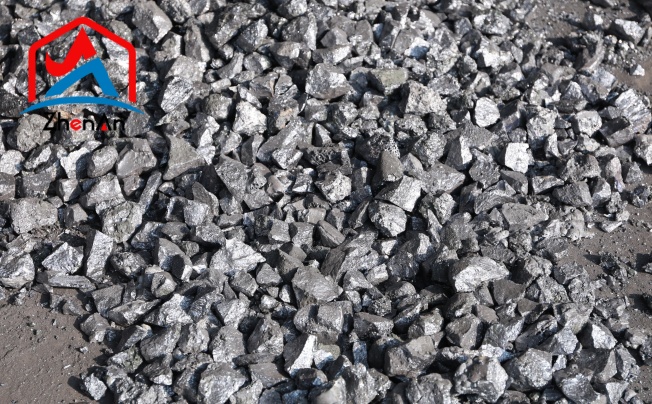This article examines the legal status of Silicon Dioxide in Europe, shedding light on its classification as a food additive and exploring the safety evaluations conducted by regulatory authorities. By delving into the controversies surrounding its use and available alternative options, we can comprehensively understand this ubiquitous compound.
Overview of European Regulations on Food Additives
The European Food Safety Authority (EFSA)
The European Food Safety Authority (EFSA) plays a pivotal role in ensuring the safety of food additives used within the European Union (EU). Established in 2002, EFSA is an independent agency responsible for providing scientific advice and risk assessments to EU institutions and member states. When it comes to food additives like silicon dioxide, EFSA assesses their safety based on available scientific evidence, evaluates potential risks, and determines maximum permitted levels.
European Union regulations on food additives
Within the EU, food additives are regulated by various legislations to maintain high standards of consumer protection. The main legal framework governing food additives in Europe is Regulation (EC) No 1333/2008.
This regulation establishes a comprehensive list of authorized food additives, including silicon dioxide. It also outlines the specific conditions under which these additives can be used and sets maximum permitted levels to ensure safety.
The authorization process for food additives
Before a food additive can be used legally within the EU, it must undergo a rigorous authorization process. This process involves submitting a detailed dossier to EFSA containing scientific data on the additive's composition, properties, usage levels, and potential risks. EFSA then conducts an extensive evaluation of this data before providing its scientific opinion on the additive's safety.
Once EFSA concludes that an additive is safe for consumption, it goes through further scrutiny by the European Commission and Member States before being approved or rejected for use in specific foods. This multi-step authorization process ensures that only those additives meeting strict safety criteria are permitted for use within Europe.
Safety evaluations and maximum permitted levels
During safety evaluations conducted by EFSA, several aspects are considered including toxicological studies, exposure assessments, and potential health risks associated with consumption. These evaluations help determine the maximum permitted levels for each additive based on concentrations that pose no significant health risks when ingested as part of a normal diet. For silicon dioxide specifically categorized as E551 according to EU regulations; its maximum allowed level varies depending on different categories of foods such as condiments or processed fruits and vegetables.
These limits undergo regular reviews considering new scientific evidence or emerging concerns regarding consumer safety. With strict regulations in place governing authorization procedures and setting limits ensuring consumer protection from potential adverse effects linked to excessive intake or prolonged exposure to silicon dioxide or other food additives ensures high standards of public health across Europe.
Legal Status of Silicon Dioxide in Europe
Classification as a food additive (E551)
Silicon Dioxide, commonly known as silica or silica dioxide, is classified as a food additive in Europe under the code E551. This classification ensures that its use in food and beverages is regulated and monitored to ensure safety.
The European Union (EU) has established a comprehensive framework for the authorization and control of food additives, including Silicon Dioxide. As an authorized food additive, Silicon Dioxide undergoes rigorous evaluation by the European Food Safety Authority (EFSA) before it can be used in the European market.
The EFSA thoroughly examines scientific evidence regarding its safety, potential risks, and benefits to determine if it meets the necessary criteria for approval. Once approved, Silicon Dioxide can be used as an ingredient in various food products across Europe.
Permitted uses and applications in different food categories
Silicon Dioxide finds widespread use across different food categories due to its versatile properties. It primarily functions as an anti-caking agent, preventing clumping or sticking together of powdered or granulated substances.
For example, it is commonly added to spices, salt, powdered sugar, instant coffee, and other similar products to maintain their free-flowing consistency. Furthermore, Silicon Dioxide acts as a carrier substance for flavors and aromas by encapsulating them.
This allows controlled release during consumption or processing. It is also utilized as a thickening agent in certain beverages such as fruit juices or beer.
Maximum levels allowed in specific products
To ensure consumer safety, there are strict regulations on the maximum levels of Silicon Dioxide permitted in specific products within the EU. These limits are determined based on extensive scientific research conducted by EFSA regarding potential health risks associated with consumption.
For instance, Silica Gel (a form of Silicon Dioxide) used to absorb moisture may have maximum residual limits defined separately from other uses like an anti-caking agent. These permissible levels vary depending on factors such as product type and intended consumer exposure.
It is important to note that these dosage restrictions are imposed to mitigate any possible adverse effects while still allowing for safe usage across various foods consumed by Europeans daily. Overall, understanding the legal status of Silicon Dioxide demonstrates the rigorous evaluation process it undergoes before being authorized for use as a food additive within Europe's regulatory framework.
Safety Evaluation and Risk Assessment
EFSA's Scientific Opinions on Silicon Dioxide
The European Food Safety Authority (EFSA) has conducted comprehensive scientific evaluations of Silicon Dioxide, commonly known as E551, to determine its safety as a food additive. EFSA’s Panel on Food Additives and Flavourings (FAF) has reviewed the available data on Silicon Dioxide, including toxicological studies, exposure assessments, and potential health risks associated with its consumption. These evaluations aim to ensure that the use of Silicon Dioxide in food products complies with stringent safety standards to protect public health.
Toxicological Studies and Exposure Assessment
Toxicological studies have been instrumental in assessing the safety of Silicon Dioxide as a food additive. These studies have investigated the potential adverse effects of prolonged exposure to Silicon Dioxide through ingestion.
Additionally, exposure assessments have been conducted to estimate the dietary intake of Silicon Dioxide among different population groups within Europe. This comprehensive analysis helps determine whether the levels of Silicon Dioxide present in various food products are within safe limits and do not pose any significant health risks.
Potential Health Risks Associated with Consumption
The potential health risks associated with the consumption of Silicon Dioxide have been a focal point of scientific scrutiny. EFSA’s evaluations consider various factors such as particle size, surface area, and bioavailability when assessing the potential health impacts of Silicon Dioxide ingestion.
Regulation Updates and Future Outlook
Recent changes or amendments to the regulations
In recent years, there have been notable changes and amendments to the regulations governing the use of Silicon Dioxide (SiO2) in Europe. The European Food Safety Authority (EFSA) constantly evaluates scientific evidence and updates its guidelines accordingly.
One significant change occurred in 2018 when EFSA revised the acceptable daily intake (ADI) for SiO2. The revised ADI took into account new studies on SiO2's potential health risks and aimed to ensure consumer safety.
This change reflects the commitment of regulatory bodies in Europe to stay abreast of emerging research and adapt regulations accordingly. Moreover, specific amendments have been made regarding labeling requirements for food products containing Silicon Dioxide.
To enhance transparency and inform consumers, manufacturers are now required to indicate the presence of SiO2 on product labels. This allows individuals with allergies or specific dietary restrictions to make informed choices when purchasing food items.
Potential future developments or restrictions
Looking ahead, there are several potential future developments and restrictions that may impact the legal status of Silicon Dioxide in Europe. One key area of concern is its use as an anti-caking agent in certain powdered food products. While SiO2 is generally recognized as safe at currently permitted levels, ongoing scientific research suggests a need for further evaluation regarding its long-term effects when inhaled.
Following this concern, there is a possibility that future regulations may introduce stricter limits or alternative solutions for certain food categories where inhalation exposure risks are higher. Regulatory bodies such as EFSA continuously monitor scientific advancements and conduct risk assessments to stay informed about any emerging health concerns related to SiO2 consumption.
Additionally, there is growing interest among consumers in natural alternatives to synthetic additives like Silicon Dioxide. As a result, industry trends indicate a shift towards using more plant-based ingredients as anti-caking agents or fillers in food production processes.
Future regulatory developments may support this transition by encouraging research into sustainable alternatives while considering their safety profiles. Recent changes have been implemented regarding acceptable daily intake levels and labeling requirements for Silicon Dioxide-containing products across Europe.
However, potential future developments could introduce stricter limits or alternative approaches based on emerging scientific evidence regarding inhalation risks associated with SiO2 consumption. Moreover, increasing consumer demand for natural alternatives might lead regulators to explore sustainable options while maintaining strict safety standards within the EU's regulatory framework.






